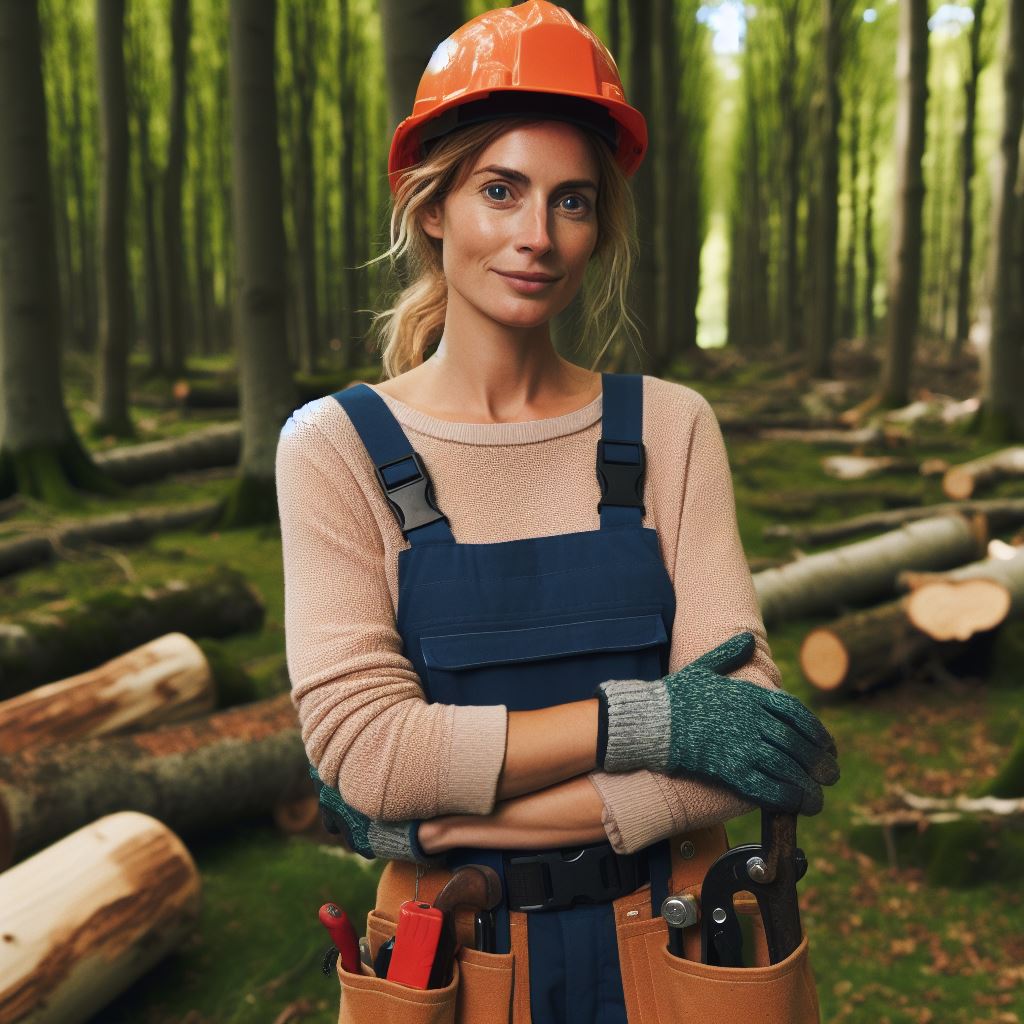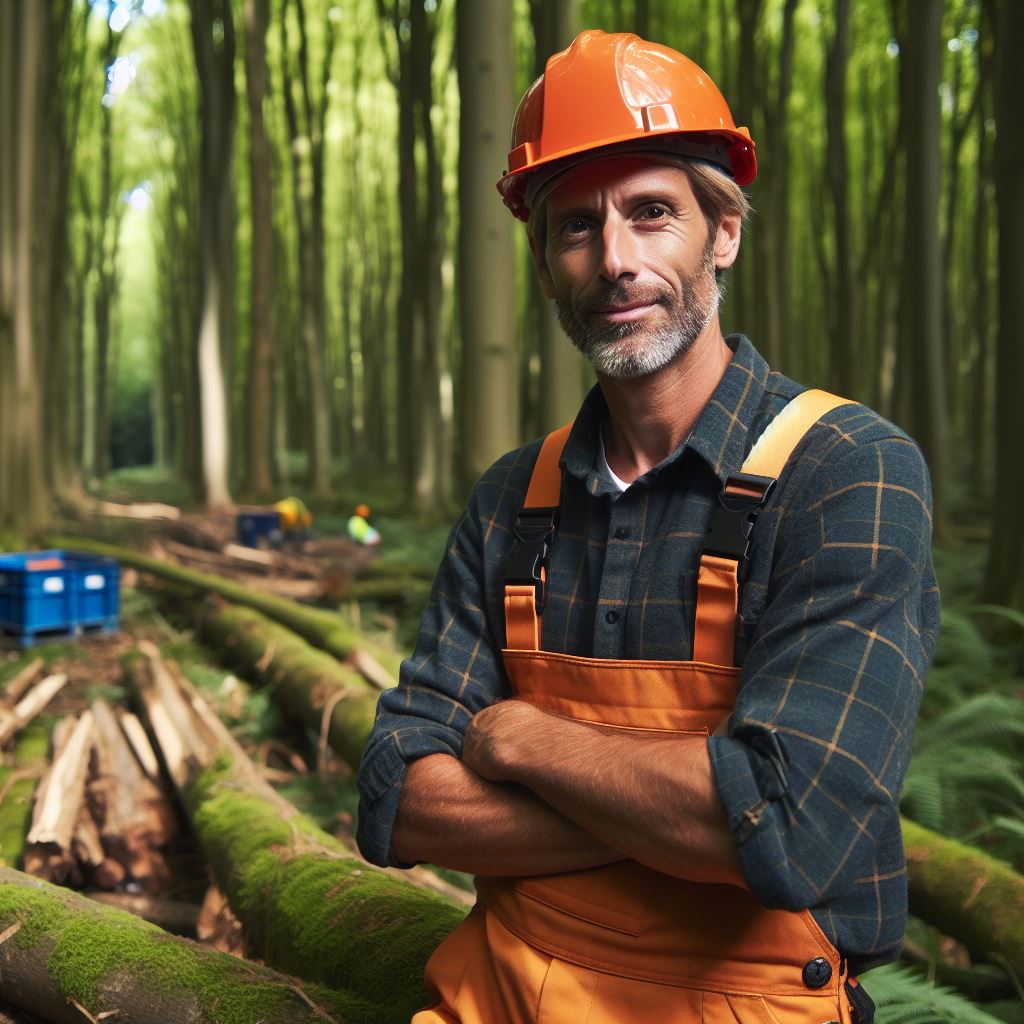Introduction
The UK forestry industry contributes to the economy and sustainability, with women making significant strides in traditionally male-dominated roles.
This blog post aims to illuminate women’s valuable contributions and inspire the next generation for gender equality in forestry.
Women bring fresh perspectives to forest management, research, and policy development, fostering innovation.
Their expertise in environmental science promotes sustainable practices, empowering young women to consider forestry careers.
This post challenges stereotypes hindering women’s progress, promoting mentorship and support for an inclusive industry.
The forestry sector must continue celebrating women’s achievements to achieve a gender-balanced workforce and ensure sustainable forest management.
In a nutshell, women in forestry play an integral role, shaping the industry and inspiring future generations for gender equality.
Overview of Forestry in the UK
Importance of forestry in terms of economy, environment, and society
Forestry in the UK is pivotal for the economy, environment, and society, contributing significantly to each facet.
Employment Statistics in Forestry
Statistics reveal a substantial number of individuals employed in the dynamic and diverse forestry sector.
Career Opportunities in Forestry
Diverse career paths await in the forestry industry, from management and research to policy development and conservation.
Challenges Faced by Women in Forestry
Historical underrepresentation of women in forestry
The forestry industry has long been dominated by men, with women historically underrepresented in this field.
This underrepresentation not only affects the industry’s gender diversity but also poses several challenges for women aiming to pursue a career in forestry.
Gender stereotypes and their impact on career choices
One significant challenge faced by women in forestry is the influence of gender stereotypes.
Society often associates women with nurturing roles and portrays forestry as a physically demanding and male-oriented profession.
As a result, many women may feel discouraged or overlooked when considering forestry as a career choice.
Moreover, gender stereotypes can discourage women from pursuing education and training in forestry.
Society’s ingrained beliefs about gender roles may lead women to choose other career paths that align more closely with traditional feminine stereotypes.
This perpetuates the cycle of underrepresentation in the industry.
Challenges of inclusion, advancement, and gender pay gap within the industry
Women in forestry face challenges beyond gender stereotypes, including barriers to inclusion and advancement in a predominantly male-dominated culture.
This lack of inclusion results in isolation, limited opportunities, and struggles to be heard.
Furthermore, the gender pay gap persists, with studies revealing lower wages for women, impacting financial well-being and emphasizing gender inequality.
Addressing these challenges requires joint efforts from the forestry industry and society.
Encouraging young girls to explore forestry early on can break down stereotypes, while mentorship and networking opportunities support women’s advancement.
Companies should prioritize initiatives promoting gender diversity and equality, fostering inclusive environments and addressing pay gaps transparently.
By confronting these challenges directly, the forestry industry can empower women for full participation and success in this traditionally male-dominated field, enhancing diversity and introducing new perspectives.
Read: UK Farming Subsidies: Understanding the Basics
Women Breaking Barriers in Forestry
Forestry has traditionally been a male-dominated field, but women have been breaking barriers and making significant contributions in various roles within the industry.
Let’s take a closer look at some successful women in forestry and their inspiring journeys.
Profiles of Successful Women in Forestry
- Dr. Sarah Woodruff: As a renowned forest ecologist, Dr. Woodruff has dedicated her career to studying the complex relationships between ecosystems and climate change.
- Julia Roberts: An experienced forestry technician, Julia has played a crucial role in managing and preserving forests through sustainable practices.
- Grace Thompson: As a respected forest manager, Grace has successfully implemented conservation strategies to protect endangered species and their habitats.
- Lisa Adams: With a background in forestry engineering, Lisa has excelled in designing innovative techniques for forest restoration and reforestation efforts.
Educational Background and Career Paths
These accomplished women in forestry have diverse educational backgrounds, proving that there are several paths to success in this field.
- Dr. Sarah Woodruff obtained a Ph.D. in Environmental Science from a top research university, specializing in forest ecology.
- Julia Roberts pursued a Bachelor’s degree in Forestry with a focus on forest management and sustainable practices.
- Grace Thompson completed a Master’s degree in Conservation Biology, honing her skills in managing forest ecosystems.
- Lisa Adams holds a degree in Forestry Engineering, which provided her with a strong foundation in technical aspects of forest management.
These women have overcome challenges and worked hard to establish themselves as leading professionals in the forestry industry.
Accomplishments and Contributions
These remarkable women have made significant contributions to the forestry sector, breaking through gender barriers along the way.
Personalized UK Career Consulting
Receive tailored career guidance designed just for you. Get actionable steps and expert support to boost your career in 1-3 days. Take control of your career now.
Get Started- Dr. Woodruff’s research has shed light on the impact of climate change on forests, offering valuable insights to policymakers and conservation organizations.
- Julia Roberts’ sustainable forest management practices have resulted in increased biodiversity and improved forest health.
- Grace Thompson’s conservation strategies and efforts to protect endangered species have received international recognition and awards.
- Lisa Adams’ innovative techniques for forest restoration have been implemented successfully in numerous reforestation projects worldwide.
These women continue to inspire and pave the way for other aspiring women in forestry. Their achievements highlight the importance of diversity and inclusivity in this field.
Overall, these profiles demonstrate the significant role women play in forestry, breaking barriers and contributing their expertise to protect and sustain our forests.
Their educational backgrounds, career paths, and remarkable accomplishments serve as a reminder that gender should never limit one’s potential and impact in any industry.
Read: The Evolution of Fishing in the UK: A Journey

Gain More Insights: Agritech Trends Impacting UK Farm Managers
Initiatives and Support for Women in Forestry
In recent years, there have been significant efforts to promote women’s participation in the field of forestry.
Various organizations and networks have emerged with the goal of highlighting and addressing the challenges faced by women in this male-dominated industry.
Organizations and networks focusing on promoting women’s participation in forestry
One such organization is Women in Forestry (WIF), which aims to empower women in forestry through networking, mentorship, and professional development opportunities.
WIF provides a platform for women to connect, share experiences, and support each other in their careers.
The International Network of Women in Forestry Research and Education (WINFRE) actively promotes women’s participation in forestry research and education.
WINFRE organizes conferences, workshops, and training programs to facilitate knowledge exchange and collaboration among female professionals.
Mentoring programs and scholarships for women interested in forestry careers
To encourage more women to pursue careers in forestry, mentoring programs and scholarships have been established.
These initiatives aim to provide guidance, support, and financial assistance to women at various stages of their academic and professional journey.
For example, the Jane Doe Scholarship Fund offers scholarships specifically for women pursuing forestry-related degrees.
The fund not only helps women overcome financial barriers but also serves as a reminder that their contributions and achievements in the field are valued.
Additionally, mentoring programs like Women in Forestry Mentoring (WFM) connect experienced women in the industry with aspiring female foresters.
These mentorship relationships provide advice, guidance, and a supportive network for women entering or advancing in forestry careers.
Importance of creating a supportive work culture and strategies for achieving gender equality in forestry
Creating a supportive work culture is crucial for the retention and advancement of women in forestry.
Forest agencies, companies, and organizations can take several measures to facilitate a more inclusive environment.
Firstly, implementing flexible work policies and family-friendly practices can help women balance their personal and professional responsibilities.
This includes offering maternity leave, flexible work hours, and child care facilities.
Furthermore, providing equal access to training and career development opportunities is essential.
Organizations can ensure that women have access to the same resources and opportunities for professional growth as their male counterparts.
Finally, addressing gender bias and discrimination is key to achieving gender equality in forestry.
Companies and organizations can establish clear protocols for reporting and addressing instances of sexism, harassment, and discrimination.
Your Dream Job Starts with a Perfect CV
Get a tailored CV and cover letter that captures your unique strengths and stands out in your industry. Let us help you make an unforgettable first impression.
Get StartedBasically, initiatives and support programs have been established to promote women’s participation in forestry.
By highlighting organizations and networks, offering mentoring programs and scholarships, and creating a supportive work culture, gender equality in forestry can be achieved.
It is crucial for the industry to recognize and value the contributions of women to ensure a diverse and sustainable future for forestry.
Read: Modern Fishing Gear: UK Fishermen’s Toolkit
Tips for Women Pursuing a Career in Forestry
Advice for women considering a career in forestry
- Do thorough research about the industry and understand its demands and opportunities.
- Connect with women already working in forestry to gain insights and advice.
- Seek mentors who can guide you through the challenges and help you navigate your career path.
- Develop a strong network of professionals and join relevant industry organizations.
- Stay updated on the latest advancements and technologies in forestry through continuous learning.
- Believe in yourself and your abilities, and never underestimate your potential.
Skills and qualifications required for different roles in the industry
- Obtain a degree in forestry or a related field to enhance your knowledge and skills.
- Gain practical experience through internships or entry-level positions in forestry organizations.
- Develop strong analytical and problem-solving skills, as they are crucial in the field.
- Acquire a good understanding of environmental laws, regulations, and sustainable practices.
- Improve communication and interpersonal skills to work effectively with diverse teams.
- Foster a passion for nature, conservation, and sustainable resource management.
Strategies for overcoming gender-related challenges and building a successful career in forestry
- Be confident in your abilities and don’t let gender stereotypes discourage you.
- Advocate for yourself and assertively communicate your opinions and ideas.
- Find female mentors who have successfully navigated male-dominated environments in forestry.
- Build a support system of colleagues, both men and women, who champion gender equality.
- Seek opportunities to showcase your skills and expertise through public speaking or publishing articles.
- Stay persistent and resilient in the face of setbacks, using them as opportunities to grow and learn.
Breaking into the forestry industry as a woman may present unique challenges, but with determination, perseverance, and a supportive network, you can build a successful and fulfilling career.
By following the advice of seasoned professionals and continuously developing your skills, you can overcome gender-related obstacles and make a significant impact in the field.
Read: UK Fishing Laws: What Every Fisherman Must Know
Gain More Insights: From Sea to Plate: A UK Fisherman’s Economic Impact
Conclusion
In closing, highlighting women’s roles in forestry is crucial for various reasons.
By showcasing the contributions and achievements of women in this field, we can inspire and encourage more women to pursue careers in forestry.
Increasing the representation of women in the industry will not only bring about greater diversity and inclusivity, but also unlock a wealth of untapped talent and perspectives.
It is essential for the future of forestry to have equal gender representation and ensure that women have equal opportunities for growth and success.
As we look ahead, the potential for increased diversity and inclusivity in forestry is promising.
With continued efforts to support and empower women in this field, we can create a more balanced and equitable industry.
By breaking down barriers and challenging gender stereotypes, we can pave the way for a future where women play a significant role in shaping the sustainable management of our forests.
It is important to recognize and celebrate the accomplishments of women in forestry, and to actively encourage and support more women to join this rewarding profession.
By doing so, we can build a brighter future for both women and the forestry industry as a whole.
[E-Book for Sale]
500 Cutting-Edge Tech Startup Ideas for 2024 & 2025: Innovate, Create, Dominate
$19.99 • 500 Tech Startup Ideas • 62 pages
You will get inspired with 500 innovative tech startup ideas for 2024 and 2025, complete with concise descriptions to help you kickstart your entrepreneurial journey in AI, Blockchain, IoT, Fintech, and AR/VR.




